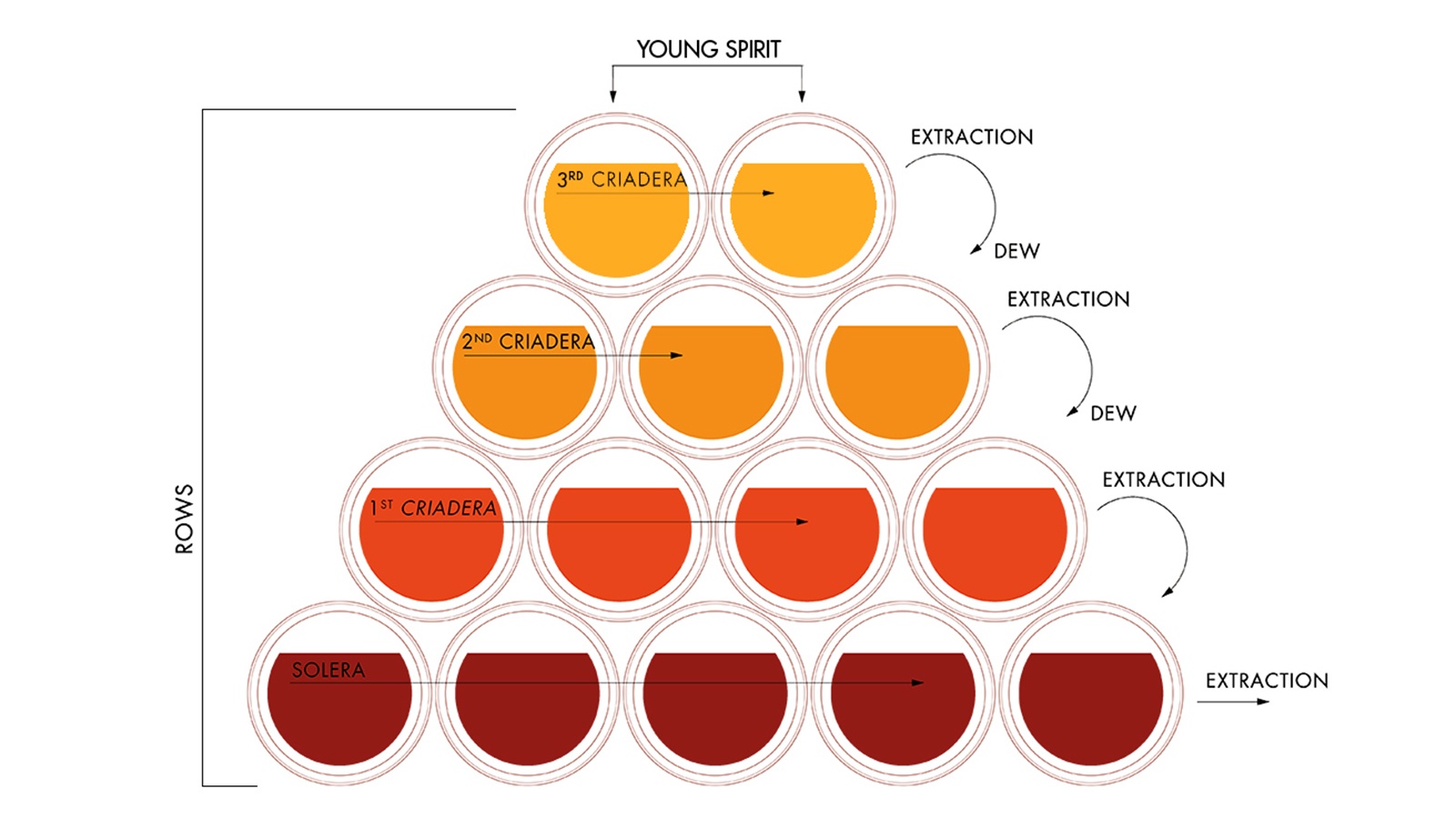
Playing with Time: The Solera Method in Rum
The Solera Method is an aging technique introduced by Spanish sherry bodegas in the late 18th century. Conversely, solera aged rums are a much more recent trend. A few producers from Latin America started to experiment with solera-aged rum in the 1990s and mass success arrived after the 2000s. Among the first and foremost producers, there were Santa Teresa, Zacapa, Botran, Matusalem; more recently one can also find Quorhum, La Hechicera, Captain Morgan, Cartavio, Milionario, Cacique, and many other brands offering some sort of solera-aged bottlings.
Solera means “soil” and stands for the bottom row of a cask pyramid sets for aging in a warehouse. The solera row contains the most aged spirit while the sobretabla row on the top contains the youngest spirit in the pyramid, in between you can find several criaderas rows that contain a blend of variously aged spirit. In fact, every time some liquid gets bottled from the bottom row, those casks are filled with less aged spirit from the row above, as the system lets the liquid cascading from the sobretabla down to the solera. Such a method allows for great consistency after a few years of aging (at least 3 years are required for using the solera label). Indeed, the spirit that every year gets ready for bottling in the solera row offers a perfect average of the years that have passed since the beginning of the pyramid.
In recent years, many aficionados began questioning solera rums since their labels can be misleading about their age expression for what sometimes are just mass-produced young spirits. Many producers label their bottles with numbers like 15, 1796, or 23 that have nothing to do with the rum’s age but are simple marketing gimmicks. Other producers tweak the original solera system by changing casks every year to maximize wood extraction as well as to use a mix of ex-bourbon, ex-sherry, ex-wine casks to widen aromatic influence. At this point, we should be talking of blended rum rather than solera rum, just as in the whisky world, and there would be nothing wrong with it. Given the variety of producing countries and traditions, it is extremely difficult to set unified policies in rum making. Yet, as “solera rum” does not stand for a universally accepted production technique, producers and distributors should be more honest and open about how they make their products. Good products will always be praised, while dishonest practices will always be condemned. It matters only what is inside the bottle.

Do not miss any news and the highest rated spirits!